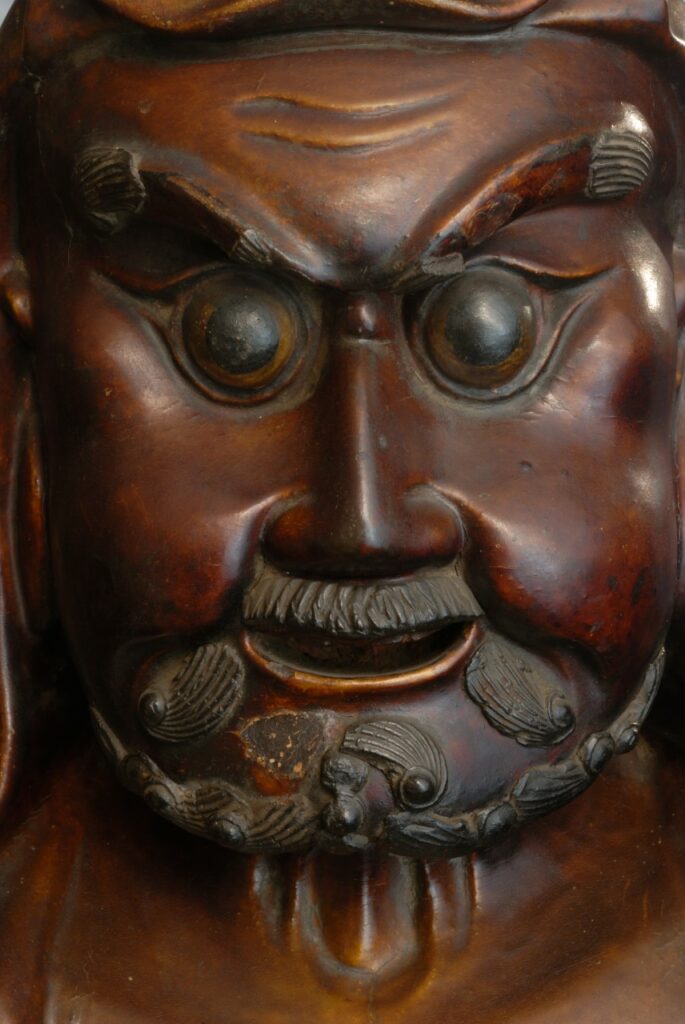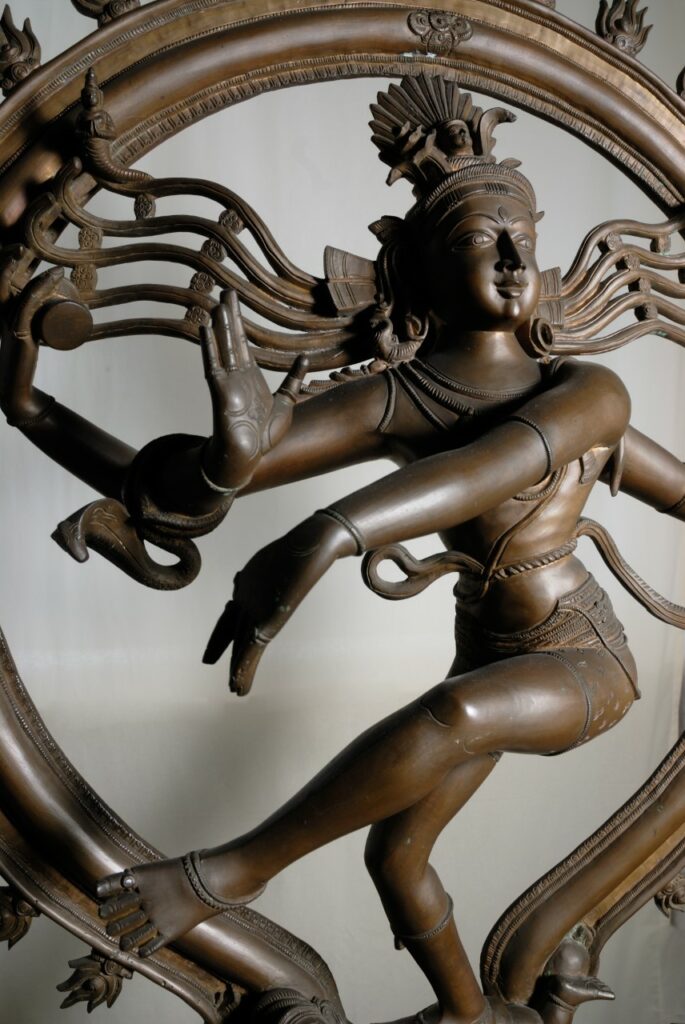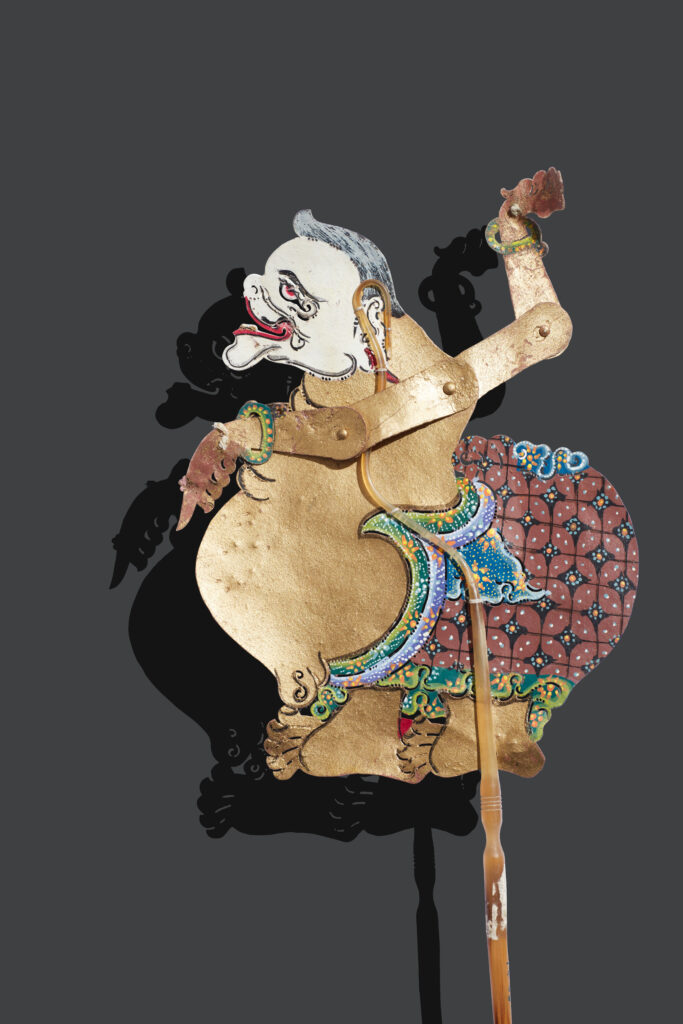Ramona Jelinek-Menke (Philipps-University Marburg)
Scholars of religions who follow the Material Religion approach are interested in how the interpretation of religious artefacts and socio-cultural categories are entangled. In this blog post, I discuss the extent to which socio-culturally constructed categories such as sex/gender and impairment/disability, which are the subject of public debates come into play when interpreting anthropomorphic religious artefacts. Using an example from Germany, I will establish that the category of religion and the classifications used to describe the heterogeneity of bodies in public strongly influence each other, and that both depend on the specific context in which they are expressed.
Recently, I taught a course on “bodies of religions” at the Department for the Study of Religions and the Museum of Religions at Philipps-University Marburg in Germany. The museum houses religious objects from all over the world and multiple religious traditions. In 1927 Rudolf Otto, the Protestant theologian who wrote the well-known book “The Idea of the Holy”, founded the museum. Today, researchers and students of the study of religions as well as citizens of Marburg and tourists research, teach and learn at the museum (weblink). In the lessons on “bodies of religions”, we especially focused on the embodiment of the social categories gender, disability, and race. The students described religious artefacts such as images of Kali from India, Bodhidharma from China, Semar from Indonesia, icons of three-handed Mary from south-eastern Europe, and photographs of the Venus of Milo in Italy in detail.

I am certain that if these students were to meet people with “extraordinary bodies” (Garland-Thomson 1997), such as those without eyelids or those with more or fewer than two arms, on the street, they would spontaneously deem them to be “disabled”. However, they never called these “Godly things” (Paine 2000) “impaired” or “disabled”. They always explicitly and quickly assigned sex and sometimes national, ethnic or religious affiliations to the figures (or, at least, they tried to on the basis of their knowledge). For instance, they identified a statue of Kali in the Museum of Religions as female, Indian and Hindu, but they did not even mention its many arms. When I asked them why, one student answered: “I just expected something like this from a statue from Hindu religions”. When I asked them whether they had thought of Kali, Semar or the others as “impaired”, they said they had not. One student explained: “Perhaps we didn’t dare to ask whether something was wrong with the figures in the museum. They are, after all, religious objects!” Another student added: “Just as with works of art, one assumes that this is how it is supposed to be and is therefore justified.”

Photo: Christian Jelinek, © Museum of Religions Marburg, shelf number Lp 091.
As a scholar of religions researching the construction of social differentiation, especially the interaction between religion and disability mediated by beliefs, practices, organisations and artefacts, this made me wonder: When do we as everyday actors consider there to be something “wrong” with extraordinary bodies? Is it the case that such bodies are not ‘expectable’ or justified in public, but are when in the museum, in religion and works of art? Are there no disabled Gods?
In the following, I will present three hypotheses for why visitors to the Museum of Religions, socialised in the ‘West’, do not perceive anthropomorphic godly figures as disabled. In doing so, I will show what we can learn from this about the category of religion, the construction of bodily difference, and how they mutually influence each other in the context of a so-called Western knowledge order.
My first hypothesis is a rather simple one: The fact that students visiting the museum do not label certain body forms as impairments could relate to the extent to which these forms and their bearers are excluded from the public. Of course, students cannot be representative of all museum visitors. However, their statements can be a starting point for my discussion. The interpretation of religious artefacts – made by humans, considered divine from an emic perspective – could thus be directly related to the everyday life of the viewers. Due to processes of exclusion, disabled people are often not present in the everyday life of non-disabled individuals, with the result that many non-disabled people do not expect to see people with impairments. As a consequence, while looking at religious objects in the museum, the non-disabled are not aware that people can have the bodily characteristics they see in the artefacts, and that these could be interpreted as impairments in everyday life. As such, this category simply does not come into play when non-disabled people interpret religious anthropomorphic artefacts. By contrast, people who do experience disability, such as the theologian Eiesland, do not shy away from calling Jesus with his stigmata a “disabled God” (Eiesland 1994), something other theologians consider inappropriate (Eurich 2008). The students on my course did not dare to call a godly figure impaired. This may be because doing so seemed analogous to insulting the figure or god. But we might ask, if that is the case, why do we use this term to describe people?
While the students did not point out the artefacts’ impairments shown in the figures, they did consistently assign them sex and gender roles. This could be due to current high sensitivity to the attribution of sex, and critical reflection on gender roles in the public sphere, which may result in visitors having a certain predisposition in their perception and interpretation of museum objects. The artefacts can become a focus of reflection in the visitors’ political discussions about gender roles and the socio-structural position of different groups. This can be seen, for example, in the students inferring from Ardhanarishvara depictions that Hindu society in India has a positive attitude towards transsexuals as a group. This contrasts with Heller’s reconstructions of different interpretations of diverse sexes and genders in Hindu currents, which is grounded in her expertise (Heller 2017).

My second hypothesis relates to the variability of the social manifestation of sex and impairment. That is, to the contextuality of the characteristics of gender roles and disability. I have observed that students discussing museum objects do not identify sex or impairment primarily or exclusively on the basis of body shape. This was apparent both during discussions in lessons at the Museum of Religions, and when showing photos of museum artefacts to students from various universities. Consequently, my hypothesis is that attributions of sex, for instance, are not based on body forms, but rather on context-dependent and role-specific modes of actions and their representations, and the clothing and accessories worn by the figures. Hence, the attribution of sex is based on the viewer’s perception of gender. What is relevant is the markers that identify the sex/gender from the viewer’s perspective, and not the sex the producers wanted to attribute to their figures through markers of a certain sex/gender in their own frame of reference. This is because actions, clothing, and accessories are not universally interpreted in the same way (Morgan 2015). As such, some museum visitors cannot help but see markers of femininity in the long hair and the dance of Shiva, if scholars, teachers and curators do not provide them with knowledge to help them look at the figures on display through the eyes of their makers and users. Confined in showcases, artefacts forfeit the agency they had in their original context and become mere foci of reflection in the museum visitors’ orders of knowledge. Below, we will see that this loss of agency has implications not only for the social construction of the sex/gender of the figures, but also for the social construction of their dis/ability.

Given that the students I talked to identified sex by actions, clothing and accessories, I considered whether they would also infer impairment from the same. While looking carefully at the anthropomorphic artefacts on display, it struck me that the figures do not have accessories that could designate them as bodily, cognitively or behaviourally impaired from the students’ socio-culturally specific perspective. Consequently, the students could not identify the figures as impaired, despite the anthropomorphic artefacts’ bodily status differing from that which is generally considered normal or non-disabled. In the “Western” society in which my students were socialised, there are typical accessories for people considered impaired, such as canes for the blind or wheelchairs for mobility-impaired people, but the anthropomorphic artefacts exhibited in the Museum of Religions do not carry such socially specific identifiers. It could therefore be a consequence of these two factors that while visitors perceive anthropomorphic religious artefacts as gendered, they do not see any disabled godly figures. The students’ reasons for not describing the religious objects as impaired point to another, more complex issue. To recall: They wanted to avoid saying that there was something wrong with the figures, and they assumed that the figures’ shapes were ‘expectable’ and justified. They reasoned that the figures were religious, and that interpreting religious artefacts was similar to interpreting works of art. To discuss the (im-)possibility of disabled god figures, we must therefore clarify what impairments have to do with being ‘unexpectable’, unjustified and wrong, and to what extent the categories of religion and art can resolve this wrongness.
My third hypothesis is that interactions produce disability, but that in a museum that labels its objects as religious there are no such interactions between people and artefacts. This hypothesis combines disability theory and theories of religion and art. Unlike my first two hypotheses, which focused in an anthropocentric way on people as interpretive actors, my third hypothesis considers the agency of artefacts.
Let’s take this one step at a time. Following what is known in the words of disability studies as a cultural model of disability (Waldschmidt 2017), I assume that 1) disability arises in interactions, 2) it results from an asymmetry of expectations and power, and 3) characteristics of people are categorised as impairments to justify their treatment as disabled. This means that in interactions, when existing expectations are not fulfilled, one person, due to their position of power, will successfully attribute the perceived deviation of expectations to a less powerful person. The defeated person is defined as acting wrongly. This person is then treated or forced to continue acting in a special, often discriminatory or stigmatised way. For example, these persons are required to use a cane or a wheelchair (we can call this disability or disablement). The people concerned thus become identifiable as the disabled, and their actions are expected or justified because they are the actions of impaired people. Weisser calls this social process disability as a conflict resolution strategy (Weisser 2007). The necessity of special treatment of the disabled, or having particular expectations about how the disabled should act, is justified by the powerful by pointing at the presence or absence of characteristics – and the powerful claim that the presence or absence of characteristics results in unexpected, supposedly abnormal or wrong interactions (in the course of this, these characteristics become impairments, which are considered to be wrong). This is what impairment, disability and wrongness have to do with each other. The religious objects or the stories being told about the deities they represent did not have enough of this wrongness so that the students did have not the idea of calling them impaired.
Expectations and power relations in museums differ from those in interactions in everyday life or public. In everyday life, people interact with each other or with objects 1) at the risk of expectations being violated, and 2) while continuously negotiating adequate and inadequate (wrong) behaviour, as well as relationships and power relations. In museums, artefacts are largely deprived of their own agency. Placed in showcases, they are passive objects of curatorial staging and description, as well as of observation and interpretation by museum visitors. In this setting, removed from their everyday contexts of interaction, the artefacts can hardly be anything other than passive museum objects that can be looked at and used to tell stories about something else – they are expected to be symbols and are ultimately reduced to just that. I claim that this has consequences for the development of disability as a category of interpretation and the identification of characteristics as impairments. In the museum context, the students I talked to cannot feel disturbed about the objects on display. Because of this, there is no need to attribute disability as a conflict resolution strategy.
Finally, religion and art are reinforcing interpretive horizons. As noted above, body forms that are considered undesirable in public and excluded from it seem permissible and even ‘expectable’ in the context of religion and art. I would argue that this relates to demarcations between different spheres of society that are at least inherent to current so-called Western constructions of society and its elements. Following systems theory, we can state that so-called modern art does not imitate the appearance of the real world perfectly, but rather creates and shows an alternative order of the world that is not realised (Luhmann 1997). Following Luhmann, in a work of art, each form must make sense in relation to the other forms within the work of art – not necessarily in relation to the everyday life that surrounds it. Certainly, this can be criticised. For this moment, however, I would like to stick to this thesis. A similar demarcation can be identified with regard to religion. Again using terms and concepts from systems theory, we can say that objects perceived as religious artefacts are assumed to be related to a distinction between transcendence and immanence (Luhmann 1977). While the artefacts in their material quality are primarily assigned to the area of immanence, they are also assumed to refer to the transcendent: “They show persons who are normally invisible, since they live beyond the boundary by which the sacred is separated from the profane” (Pomian 1986: 40; translation by the author) rather than living human beings (as is also the case in art). These objects can therefore legitimately perform actions or have body shapes that human beings are not allowed to perform or have in “Western” everyday life or public.
To conclude, we can state that extraordinary bodies are not considered a possible part of everyday life or the public, but are so deeply located in the fictional realm of art and religion that, when they appear on religious artefacts or works of art, they are not deemed worth mentioning. As one of the students said: “The beholder just expects something like this.” We might add that this is the case if it is a depiction of a divine being. Thus, the interpretive category of religion – in its current “Western” shape – influences the perception of bodily difference. In the context of religion, bodily difference does not mark the boundary between normality and deviation as it is established by the powerful in real life, but it contributes to demarcating religion itself from everyday life.

This also manifests itself in a hyper-symbolisation when body forms are being perceived and interpreted. As already mentioned, students identify neither sex nor impairment by the body shape of the figures in questions. According to my observations and those of others, body shapes are either ignored or hyper-symbolised: This means, for instance, that the figure with a voluminous body is not taken as the image of a voluminous body, and certainly not of a concrete person. The figure of a voluminous body such as the so-called Venus of Willendorf is interpreted as the personification of an abstract principle, as a symbol of desirable fertility, prosperity or the like – while actually being voluminous is considered undesirable by contemporary, “Western” viewers (Dixson/Dixson 2012; Raisborough 2016: 26). Of course, it would be exciting to know if this is different when voluminous bodies correspond to an ideal of beauty. Especially when people assume anthropomorphic artefacts to be religious objects or works of art, they understand body forms (if they address them) as a reference to, or symbol of, something that is not itself visible/shown. Thus, in the context of religion, body forms may not simply be considered not worth mentioning as stated above. From the students’ perspective, the body forms may refer to something else and formulating this may seem challenging to them.
From my perspective, this phenomenon of hyper-symbolisation strengthens the hypothesis that the shape of anthropomorphic religious and artistic artefacts is not understood as a reference to the real nature of human bodies. For museum visitors, these artefacts cannot be images of actual people with extraordinary bodies. Visitors perceive the artefacts’ bodily characteristics as symbols of conditions that are not realised in current, human society, or of that which reduces the contingency of the constitution of this world.
Whether or not there are disabled gods somewhere in the world, what we learn from these observations about the interpretive category religion in its current “Western” form is that the perceived bodily difference between what are held to be normal everyday people and the museum object becomes the criterion for qualifying an object as a religious or artistic artefact that refers to the realm beyond everyday life. To put it another way, religion as an interpretive category can be based on the perception of bodily difference.
Bio
Since 2018, Ramona Jelinek-Menke has been a staff member at the Institute for Social Anthropology and the Study of Religions at Philipps-University Marburg. She completed her PhD in the Study of Religions at the University of Zurich in 2020. In Marburg, she is a lecturer and academic coordinator of the interdisciplinary project “Dynamics of Religious Things in Museums”. In her work, she focuses on contemporary religions and their interactions with the categories of differentiation such as gender, disability and race that are used and critically discussed in the public. Her first book “Religion and Disability” is under contract with transcript and will be published open access in June 2021. Her current research project is tentatively entitled “Religious Artefacts and Social Differentiations: On the Materiality of Religion, Gender, Disability and Race”.
ramona.jelinekmenke@uni-marburg.de
References
Dixson, Alan/Dixson, Barnaby (2012): Venus figurines of the European paleolithic: Symbols of fertility or attractiveness? In: Journal of Anthropology, volume 2011, 11 pages.
Eiesland, Nany (1994): The disabled god: Toward a liberatory theology of disability. Nashville: Abington Press.
Eurich, Johannes (2008): Gerechtigkeit für Menschen mit Behinderung. Ethische Reflexionen und sozialpolitische Perspektiven. Frankfurt a.M.: Campus.
Garland-Thomson, Rosemarie (1997): Extraordinary bodies. Figuring physical disability in American culture and literature. New York: Columbia University Press.
Heller, Birgit (2017): Symbols of emancipation? Images of god/dess, devotees and trans-sex/gender in Hindu traditions. Interdisciplinary Journal for Religion and Transformation, issue 5, 235-257.
Luhmann, Niklas (1977): Funktion der Religion. Frankfurt/Main: Suhrkamp.
Luhmann, Niklas (1997): Die Kunst der Gesellschaft. Frankfurt/Main: Suhrkamp.
Morgan, David (2015): Thing. In: Material Religion, volume 7, issue 1, 140.147.
Paine, Crispin (Ed.) (2000): Godly things. Museum, objects and religion. London: Leiceister University Press.
Pomian, Krzysztof (1986): Der Ursprung des Museums. Vom Sammeln. Berlin: Wagenbach.
Raisborough, Jayne (2016): Fat bodies, health and the media. Basingstoke: Palgrave Macmillan.
Waldschmidt, Anne (2017): Disability studies goes cultural. The cultural model of disability as an analytical tool. In: Anne Waldschmidt, Hanjo Berressem and Moritz Ingwersen (ed.): Culture – Theory – Disability. Encounters between disability studies and cultural studies. Bielefeld: transcript, 19-28.
Weisser, Jan (2007): Für eine anti-essentialistische Theorie der Behinderung. In: Behindertenpädagogik. Vierteljahrsschrift für Behindertenpädagogik in Praxis, volume 46, issue 3/4, 237-249.
